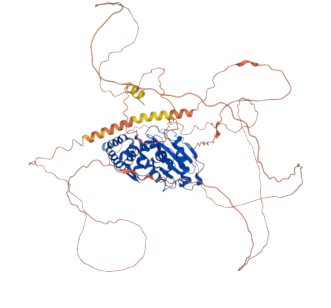Astronomers Discover Rare Exoplanet Using Microlensing Technique

Astronomers have successfully identified a new gas giant exoplanet, designated AT2021ueyL b, located approximately 3,262 light-years from Earth, utilizing the gravitational microlensing method first described by Albert Einstein in 1936. This discovery, which adds a significant data point to the growing catalog of exoplanets, was led by Dr. Marius Maskoliūnas at Vilnius University’s Faculty of Physics and marks only the third instance of a planet being detected via microlensing outside the densely populated center of the Milky Way.
Microlensing occurs when the gravitational field of a massive object, such as a star, temporarily magnifies the light of a more distant star. This technique allows astronomers to detect planets that may not otherwise be observable through traditional methods, which often rely on the dimming of a star or the gravitational tug of a planet on its host star. The ability to detect distant planets in wide orbits is particularly valuable, as it provides insights into the formation and evolution of planetary systems beyond the snow line, where volatile materials can condense into solid bodies.
The discovery of AT2021ueyL b was made possible when the Gaia satellite detected a subtle increase in brightness from a star that is roughly four billion times dimmer than what the human eye can perceive. Following this observation, telescopes in Lithuania and Poland were swiftly redirected to capture the light curve—a U-shaped pattern indicative of a planetary companion—before the brightness peak faded. According to Dr. Maskoliūnas, significant expertise and timely coordination were essential for confirming the existence of this exoplanet from two years of photometry data.
AT2021ueyL b is approximately 1.3 times the mass of Jupiter and orbits a small M-dwarf star once every 11 Earth years, situated about four times farther from its star than Earth is from the Sun. The conditions at this distance likely result in frigid temperatures, estimated to be below -200°F (-93°C), which could allow for the condensation of methane and nitrogen on any moons that may exist in this system. This unique positioning challenges existing models of planet formation, particularly regarding the rarity of gas giants around low-mass stars.
Professor Edita Stonkutė of Vilnius University noted that the discovery of a Jupiter-mass planet in such a sparse environment raises important questions about the processes by which planets form in regions with lower metallicity. Currently, only about one percent of the 5,921 confirmed exoplanets have been detected through microlensing techniques, highlighting the necessity of continued surveillance and innovative observational strategies in this field.
Future advancements in microlensing detection methodologies are anticipated with the upcoming launch of the Nancy Grace Roman Space Telescope, set for no later than May 2027. This mission aims to conduct a high-cadence microlensing survey that could potentially unveil over a thousand cold planets, including Earth-mass bodies that remain undetectable with conventional methods. The discoveries made by the Lithuanian-Polish collaboration, including AT2021ueyL b, will be instrumental in refining the strategies employed by future missions. As astronomers continue to explore the quiet outskirts of our galaxy, they are reminded that even the most unlikely regions can host extraordinary worlds.
Advertisement
Tags
Advertisement





